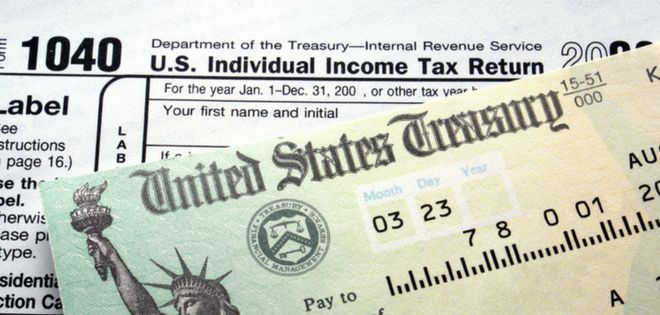
There was a time where values directed behavior of elected officials and was defined by sensitivity to the individual differences of others, expectations of fairness and mutual respect, and an enduring commitment to replace prejudice and fear with compassion and civility.
When the ink dries on the final bill that moves forward to tax reform, each of us will provide a personalized evaluation of its fundamental fairness and equality of opportunity to become more financially secure and self-sufficient. The itemized deduction for out-of-pocket medical expenses will be preserved. However, the Affordable Care Act’s individual mandate for health insurance will be eliminated with an estimated 13 million people losing health coverage. The complexity and scope of changes will take a while to understand whether an individual or family will pay more or less taxes annually.
The tax reform bill was the perfect time to reimagine equality of opportunity and reframe thinking and expectations. What if tax reform had eliminated disincentives to save and advance financial stability for millions of Americans with disabilities who are stuck with a life sentence of poverty in order to remain eligible for Social Security benefits and access to health care?
For more than eight years, we had a glimpse of the future with the consideration by Congress of the merits of the Stephen Beck, Jr. Achieving a Better Life Experience (ABLE) Act. Three years ago today, on December 19, 2014, members of Congress put aside their differences and overwhelmingly, with bipartisan support, approved the ABLE Act. ABLE represents transformative policy development that recognizes, for the first time, that parents raising a child with a disability and working-age adults with disabilities face extra costs daily in living with a disability.
Whether it be the benefit of a personal assistant to help with dressing, bathing and eating, the use of technology for communications and/or mobility, making a home accessible through design modifications, or overcoming other challenges to be more productive and independent, an ABLE account, for many individuals with disabilities, can truly be a down payment on financial stability and independence.
An ABLE account, now available through 29 state programs and the District of Columbia, will allow millions of individuals with disabilities to contribute to a tax-advantaged savings account that permits distributions from the account contributions, and income from growth in a choice of investment and savings options. Distributions allowable for disability-related expenses is broadly interpreted to cover costs related to housing, transportation, education, employment, healthcare, assistive technology and the purchase of any item or service that would assist the account beneficiary increase to maintain their health, independence and/or quality of life.
Perhaps, a more compelling feature of an ABLE account is that, under most circumstances, the resources in the account will not adversely impact eligibility for means-tested, federal public benefits like Supplemental Security Income (SSI), Medicaid and food assistance.
An ABLE account, for an individual with a disability, becomes a way to set financial goals, identify family and friends to help make contributions to the account and become more knowledgeable in managing a budget. It is a pathway to greater financial stability and can help fill money needs in emergency situations.
Early adopters now number an estimated 15,000 account owners nationwide, with contributions estimated at $50 million. The average account size, across state programs, is about $3,600. Approximately one in four accounts have an automatic contribution being made monthly or quarterly. Minimum contributions to open an account average about $25 and saving and investment choices offered vary from four to as many as 14 for a state ABLE program. The majority of account owners are saving for longer term needs.
What we have learned, in the past year, is that the majority of ABLE-eligible individuals and families have not opened ABLE accounts and many are still unaware of their existence. National Disability Institute created the ABLE National Resource Center to help individuals with disabilities and families learn more about state ABLE programs and the benefits of ABLE accounts.
Another concern families have is about the Medicaid payback provision. If a beneficiary dies, this provision allows a state to seek reimbursement for Medicaid services the beneficiary received since opening the ABLE account, if there are still funds in the account after all other expenses have been paid. Some states are moving forward to eliminate the Medicaid payback provision for residents of their respective states.
More troubling to millions of individuals with disabilities is that age of onset of disability must be 26 or younger to be eligible to open an ABLE account. For wounded warriors disabled after age 26, for individuals who became disabled from an accident or chronic health condition at a later age, the barrier of age of onset at 26 seems arbitrary and unfair.
The current tax reform package does not include an amendment to ABLE to increase the age of onset of disability beyond 26 to age 46. The reason given is that it might cost too much, at a time when the expected deficit from tax reform is expected to exceed one trillion dollars over the same time period.
Expansion of ABLE eligibility will not be found in the final bill. At a relatively small cost, it would have helped so many.
Since its inception in 2005, National Disability Institute (NDI) remains the first and only national nonprofit organization dedicated exclusively to designing pathways to economic stability and mobility for persons with disabilities. Through public policy research and development and customized training and technical assistance, NDI has become a recognized leader nationwide demonstrating that individuals across the spectrum of disabilities can work, save for the future and advance their financial capability and economic stability. To learn more, visit www.realeconomicimpact.org. Take the DISABLE POVERTY pledge at www.disablepoverty.org.
